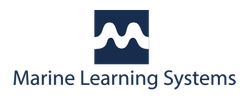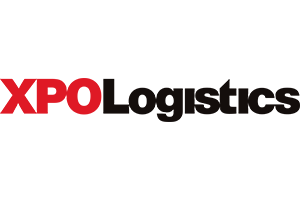How to Make Data Modernization Your Winning Strategy
May 16, 2022

Overview
In today's digital world, data is one of your company's most valuable assets. As a result, you can no longer ignore capabilities that can enhance its value. Data modernization should be at the center of any digital transformation initiative, allowing you to achieve faster speed to market, competitive advantage, and cost savings. Investment in a modern data platform facilitates a transition to data-driven decision-making and lays the foundation for future growth and success for your organization.
What is data modernization?
Data modernization is the process of moving existing siloed data out of legacy databases and into modern data platforms where it can be protected and cataloged, so it can be discovered and consumed by everyone in the organization as soon as it is collected.
Most modern data platforms are cloud-based and offer virtually limitless storage and unparalleled processing power and speed for advanced analytics at a convenient price point. Previously siloed data can be more easily correlated with new high-velocity data, such as IoT sensor data or web clickstreams, as well as unstructured data such as blog posts, videos, or PDF documents.
By democratizing access to data in your organization, you empower your workforce to make better decisions with up-to-date information. Communication and collaboration within teams are enhanced, and product teams can leverage the newly available data to build new digital properties and features to better serve your users. At the same time, data access controls are easier to implement, so you can protect your customers' private data and meet regulatory requirements.
Benefits of a modern data platform
A well-architected data model backed by a modern data platform will give your workforce a cohesive view and a single point of access to your diverse data assets, and allow your company to:
-
Improve the security of your data storage and management systems. Modern data platforms provide enhanced monitoring and threat detection capabilities and help protect sensitive data and prevent unauthorized access. Moreover, they have built-in audit trails to help quickly identify and address any unusual activity.
-
Streamline your data governance. Easily apply consistent data collection, access, and 'expiration' policies for compliance with data protection and privacy regulations.
-
Bring data from multiple sources together, bridging organizational silos for more collaborative and effective decision-making.
-
Enable data discovery. Implement and maintain a data catalog to make data easy to find. An up-to-date data catalog is also a key enabling component for the protection of private information.
-
Extract insights from unstructured data. Take advantage of cutting-edge easy-to-use machine learning cloud services to surface knowledge hidden in your organization's or your customers' data.
-
Become a data-driven organization. Ensure access to the right data at the right time and get valuable, actionable insights to make business decisions in real-time.
-
Make Big Data your friend. Big Data is characterized by what's dubbed the three Vs: volume, velocity, and variety. Modern data platforms are designed to ingest and store heterogeneous data at high speed, easily scaling with your growing needs, while staying cost-effective.
Key considerations before pursuing data modernization
Modernization of legacy data systems is a complex and demanding process. Finding and extracting data from traditional siloed and proprietary databases and applications, organization-wide file share systems, on-premise data warehouses, and even your custom-built application are resource-intensive and long-running operations. In some circumstances, transferring live data into a new modern data platform has major performance implications on the source system, leading to enterprises postponing data modernization indefinitely, rather than assuming the challenges and risk of replacing them.
As is the case with application modernization, data modernization should be iterative and incremental, starting with the low-effort high-value data assets to quickly realize ROI and allow your workforce to become familiar with the new, modern toolset and technologies.
Application modernization creates opportunities for modernizing the application's data persistence mechanisms, so make sure to align the goals of both modernization efforts and be on the lookout for synergies.
Here are some key considerations when creating your data modernization roadmap:
-
Align with prioritized business capabilities: focus on data assets that have the most value for your organization and are hardest to access.
-
Re-imagine your data architecture. You need an effective data strategy, a framework of models, policies, rules, and standards that enables easier, faster, and more flexible access to large volumes of diverse cleaner data ingested from multiple data sources. Think about how data is going to be consumed, how quickly it needs to be available, how it's going to be updated, when it expires, and who should be permitted to view fully unobscured values, and when should it be archived or purged from the system.
-
Identify the right mix of open source and proprietary technologies. Most modern data platforms build on state-of-the-art open source technologies while offering improved user experience and operation, as well as better integrations with popular systems and paid support. Every organization has different skills and tolerance to risk, so choose the service that is right for you and your team.
Creating a data modernization roadmap
Similar to our recommended approach to application modernization, data modernization should be a structured, iterative process comprised of the steps described below.
-
Discover. Take an inventory of all your data assets. Inspect your configuration management database, IT and software architecture spreadsheets, and knowledge bases.
-
Categorize and Prioritize. Categorize data assets based on value and alignment to critical business capabilities and quantify the effort to modernize. Start with the high-value/low-effort cohort, through to the low-value/high-effort one.
-
Plan. Map out the modernization journey ensuring your systems can continue to serve customers and employees throughout the multiple stages of the migration process.
-
Execute. Carefully execute your plan, and be ready to adjust mid-flight if needed. The goal is to ensure optimal outcomes with minimal disruptions. Accumulate knowledge and document recipes to be applied in future iterations.
-
Assess. Evaluate the ROI of the modernization effort and compare it with the projected ROI. Reflect on the process and address any shortcomings in the next iteration.
It is important to measure application and business performance before and after each iteration, to properly track and assess progress. You can read more in our post on how to identify and use KPIs to reach your modernization goals.
Conclusion
Data modernization enables organizations to extract value from data hidden in legacy siloed systems. It is a structured data-driven iterative process that democratizes access to data and makes it easily discoverable. It results in improved data governance and easier compliance with data protection and privacy regulations.
Data modernization with Aligned
Choosing the right technology partner for your data modernization initiative can be the difference between success and failure. At Aligned, our experts have the experience and knowledge to help you take a holistic approach and re-imagine your data platform in the cloud, in alignment with your business priorities.
We are deliberate in our process. We help you uncover what matters and how to measure it. Our experienced architects and engineers make the process of modernizing your legacy data systems and applications faster and more cost-efficient. We minimize or avoid service interruptions, and help upskill your employees.
Let's talk through your data modernization goals, and create and execute your modernization roadmap. Contact us today to find out how we can help you achieve your business goals.
Related Success Stories & Insights

We employed our expertise in application and database performance optimization to improve system performance for critical execution paths by up to 40%, resulting in faster time to insights for Genus' research team and portfolio managers. As an added benefit, the load on data systems was reduced, delaying the need for costly infrastructure upgrades.

In today's digital age, businesses want to leverage advanced technologies such as artificial intelligence and machine learning (AI/ML) to gain a competitive edge. However, to make the most of these technologies, companies need a modern data practice. So don't waste your money by ignoring this crucial first step!

Power BI is Microsoft’s robust business intelligence tool that allows you to create interactive dashboards and reports from various data sources. You may face challenges meeting data residency requirements if you have customers or users in different regions or countries. We explain the options for building a multi-region Power BI environment to address these challenges.
Client Testimonials
We're extremely proud of our track record. Hear real feedback from our clients:
CONNECT WITH OUR TEAM NOW
Learn more about how Aligned can help you with Application Development & Modernization, Data Engineering & Analytics, and Cloud Adoption.






